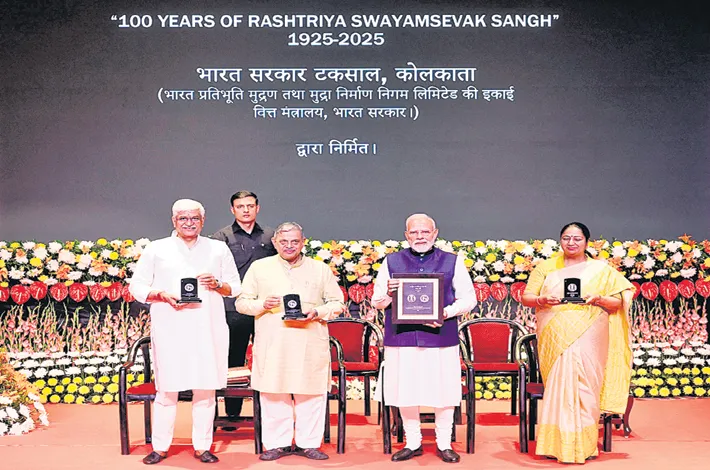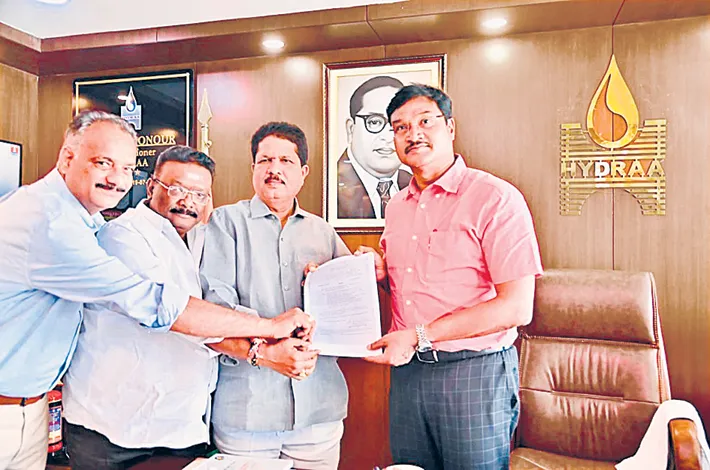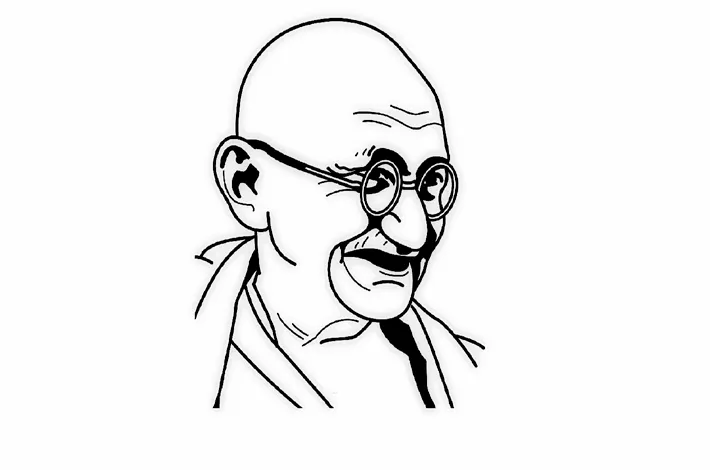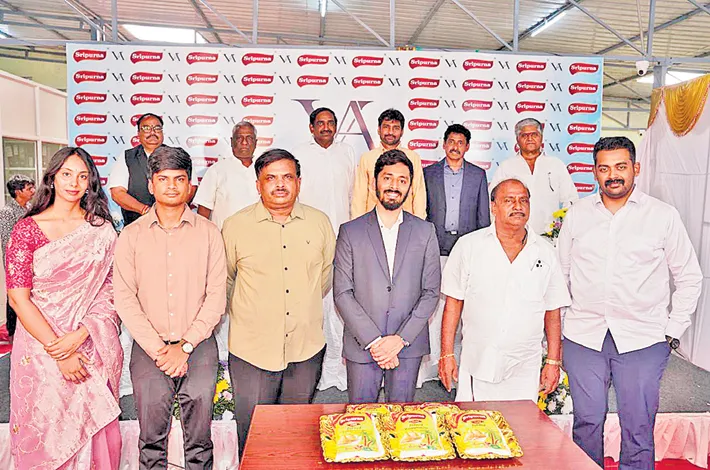RSS @ 100
02-10-2025 12:00:00 AM
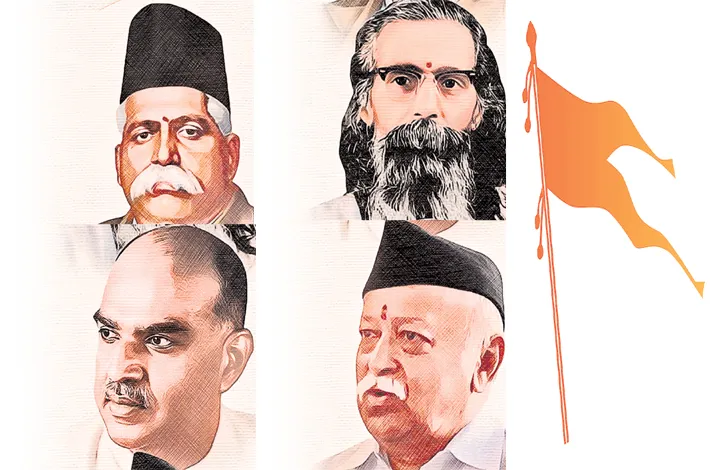
From a modest start with baithaks of a handful of swayamsevaks in a small town in Nagpur, the RSS, which completes 100 years has come a long way to become the world's biggest voluntary organisation.
On September 27, 1925, Keshav Baliram Hedgewar, a doctor was working on an idea to organise the Hindu society for nation building through character building. He gathered young men in Nagpur and announced: "We are inaugurating Sangh today." The Sangh that he launched on Vijayadashmi started with monthly baithaks (gathering of young men) at his home.
About two and a half years before that, Hedgewar had started a Rashtriya Swayamsevak Mandal in Wardha as part of his experiments to work out a model that could help "transform society".
Four or five times the karyakartas attended the baithak on their own and later on they had to be intimated. Later, weekly baithaks followed and finally it became a daily ritual.
A full-fledged outdoor shakha started in an open ground in the next few months, with the young boys in Hedgewar's flock of swayamsevaks keen on physical activities instead of just sitting together and discussing various topics.
Khaki shorts and white shirt with a lathi became the swayamsevak's 'ganvesh' and physical activities were a regular feature at the shakha. Marthand Jog, a retired military personnel and Hedgewar's friend, started physical training of the Swayamsevaks along with parade sessions.
"When those who were attending the shakha started bringing others, the newcomers started asking about the Sangh's name. So when the karyakartas put this question to doctorji, he said: 'it has not yet been decided. You sit together and decide'," Bhagwat recalled.
Accordingly, about 16 swayamsevaks sat together in the presence of Hedgewar, and the organisation got its name as the Rashtriya Swayamsevak Sangh (RSS) on April 17 with the approval of the meeting, as a majority voted in its favour out of the four names proposed by the participants.
"Dr R Hedgewar was always in the habit of taking collection decisions which became the habit in the Sangh," Bhagwat was quoted as saying in the book 'Future Bharat.'
While the Sangh got its name six months after its formation, the posts of Sarsanghchalak, Sarkaryavah and Sarsenapati (chief trainer) were created four years later.
"The creation of the position of the Sarsanghchalak was in itself an affair extraordinaire. After discussion and debate on the changing political circumstances in the country, a two-day meeting of all prominent swayam sevaks was held in Nagpur on 9 and 10 November 1929," former BJP MP Rakesh Sinha says in his book 'The Builders of Modern India- DR Keshav Baliram Hedgewar'.
Over the years, a large number of RSS-inspired organisations have been formed by the swayamsevaks. Of them, 32 are prominent, including Bharatiya Majdoor Sangh, Vanvasi Kalyan Ashram, Akhil Bharatiya Vidyarthi Parishad and Bharatiya Janata Party (BJP).
After Independence, the RSS faced three bans by the then governments, with the first being imposed after Mahatma Gandhi's assassination by Nathuram Godse on January 30, 1948. The RSS' second Sarsanghchalak, MS Golwalker, was arrested on February 1, 1948, as the then government blamed the Sangh for the assassination. The year also saw thousands of swayamsevaks being arrested.
The RSS was banned for the second time on July 4, 1975, and Balasaheb Deoras, the then RSS chief, was arrested after the Indira Gandhi government imposed the Emergency on June 25.
The state of Emergency, which lasted 21 months, saw thousands of RSS workers being arrested and some even tortured to death, several RSS leaders recall. A large number of Sangh leaders and workers, however, continued their agitation against the imposition of the Emergency while remaining underground.
The RSS was banned for the third time after the demolition of the Babri mosque in Ayodhya.
The RSS is running about more than one lakh daily, weekly and monthly 'shakhas' across the country.
As part of its centenary plans, it is set to carry out a pan-India door-to-door public outreach campaign and organise over one lakh Hindu sammelans, starting with Mohan Bhagwat's annual Vijayadashmi address at its Nagpur headquarters on Thursday.
"At the start of the Sangh, there was one word that signified its ideology 'nation'. The organisation too had just one category of membership -- the 'swayam sevak'. As the Sangh expanded, its organisational edifice began to take shape," former BJP MP Rakesh Sinha notes in his book.
"The shakha is not a physical training centre, but an ideological centre for an intellectual movement. The plan of a 'SanghShikshaVarg' (Sangh educational class) for training swayamsevaks and strengthening their commitment was also implemented later," he says.
With the BJP at the helm in several states and at the Centre under the leadership of Prime Minister Narendra Modi, a former RSS pracharak, the Sangh is looking forward to continuing its mission with much vigour and motivation.
"In the last few years, the picture of the country changed and the governments too, with the success of our work," RSS general secretary Dattatreya Hosabale said at an event where Prime Minister Modi launched a commemorative postage stamp and a coin to mark the Hindutva organisation's centenary.
"... A new path has emerged. We have to strengthen Bharat's vimarsh (narrative) within the country and across the global stage as well. Across the world, Bharat's narrative about Bharat must be positive, based on truth. This is the Sangh's idea on this occasion of its centenary," he added.
As part of the RSS key agenda of ‘Panch Parivartan’, a five-fold transformation of society, Hosabale called upon people to promote and adopt 'swadeshi' products and make India self-reliant.
The March of RSS
1925: Dr Keshav Baliram Hedgewar announced the launch of the Sangh on September 27.
1926: The organisation got its name, the Rashtriya Swayamsevak Sangh, on April 17 after a majority of a small group of Hedgewar's followers voted in its favour out of a total of four proposed names.
1926: First Nitya Shakha started at Mohitewada ground in Nagpur on May 28.
1927: First special training camp with the name O.T.C. - officer's training camp - held in May with 17 participants
1928: First ceremony of initiation, Pratignya, was conducted in March. A selected group of 99 Swayamsevaks participated.
1929: Dr Keshav Baliram Hedgewar was designated as RSS Sarsanghachalak(guide and mentor)
1930: Congress passed a resolution proclaiming Purna Swaraj. Hedgewar instructed all Shakhas to celebrate 26 January as Independence Day. Hedgewar, along with several swayamsevaks, participated in Jungle Satyagraha, arrested. The black cap was introduced as part of the RSS 'ganvesh' (uniform) in place of the Khaki cap.
1940: The British government banned the Sangh uniform and route march.Sanskrit prarthna (prayer) was introduced in place of Hindi and Marathi prarthna. Sanskrit 'ajnas' (instructions) were introduced in place of English instructions. Hedgewar passed away on June 21. Madhav Sadasiva Golwalkar, fondly called as Guruji, was designated as the second RSS Sarsanghchalak on July 3.
1947: RSS swayamsevaks started 'Bharatiya Swayamsevak Sangh' in Kenya. 'Organiser' and 'Panchajanya' weeklies were launched.
1948: RSS was banned after Mahatma Gandhi's assassination on January 30. Then RSS chief Madhav Sadasiva Golwalkar and thousands of swayamsevaks arrested.
1949: The government lifted the ban on July 12, 1949. Sangh's constitution was drafted. Akhil Bharatiya Vidyardhi Parishad (ABVP) was launched.
1950: The first Akhil Bharatiya Pratinidhi Sabha, meeting of the RSS' highest decision-making body, was held in March. Vastuhara Sahayata Samiti was started to help Hindu refugees from Pakistan.
1952: A nationwide Goraksha Andolan (cow protection movement) was launched, demanding the prohibition of cow slaughter in the country. The Vanvasi Kalyan Ashram was launched. Bharatiya Jansangh was formed by Dr Syama Prasad Mookerjee and many Swayamsevaks joined it.
1954: Swayamsevaks participated in the liberation of Dadra and Nagar Haveli from Portuguese control on August 2.
1955: Swayamsevaks took a leading part in the all-party struggle for the liberation of Goa from the control of the Portuguese. Bharatiya Mazdoor Sangh was founded.
1963: As many as 3000 RSS swayamsevaks participated in the Republic Day Parade on January 26 in Delhi in full uniform and band after it got an invite.
1964: Vishva Hindu Parishad (VHP) was launched.
1973: Madhav Sadasiva Golwalkar passed away on June 5. Madhukar Dattatraya Deoras, popularly known as Balasaheb Deoras, was designated as the RSS Sarsanghchalak on June 6.
1975: The Indira Gandhi government imposed the Emergency on June 25. RSS was banned for the second time on July 4. Balasaheb arrested. Akhil Bharatiya Lok Sangharshana Samiti was launched to fight against the Emergency.
1977: Bharatiya Jana Sangh merged into the newly formed Janata Party, which came to power. The government lifted the ban on the Sangh on March 22. Jayprakash Narayan addresses the RSS meeting in Patna on November 3.
1978: Deen Dayal Sodh Sanstan launched.
1980: The Bharatiya Janata Party (BJP) was formed.
1981: Sanskar Bharati was founded.
1992: The Centre bans the RSS on December 10 after the demolition of the Babri mosque in Ayodhya.
1993: The Bahri Tribunal finds the ban on the Sangh unjustified and lifts it on June 4. Akhil Bharatiya Poorva Sainik Seva Parishad was founded.
1994: Rajendra Singh, popularly known as Rajju Bhayya, was designated as the RSS' fourth Sarsanghchalak on March 11. Laghu Udyog Bharati was founded.
1998: The BJP-led National Democratic Alliance (NDA) forms the government at the Centre, with Atal Bihari Vajpayee, a former RSS Pracharak, as Prime Minister.
2000: K S Sudershan was designated as the RSS' fifth Sarsanghchalak on March 11.
2009: KS Sudershan named Dr Mohan Bhagwat as the next Sarsanghchalak of the Sangh. Suresh Bhaiyyaji Joshi elected as the Sarkaryavah of the Sangh.
2016: RSS replaced khaki shorts with brown trousers for Swayamsevaks uniform signifying the organisation's intent to change with times and adopt dress codes in which younger generations feel comfortable.
2021: Dattatreya Hosabale elected as the RSS Sarkaryavah.





